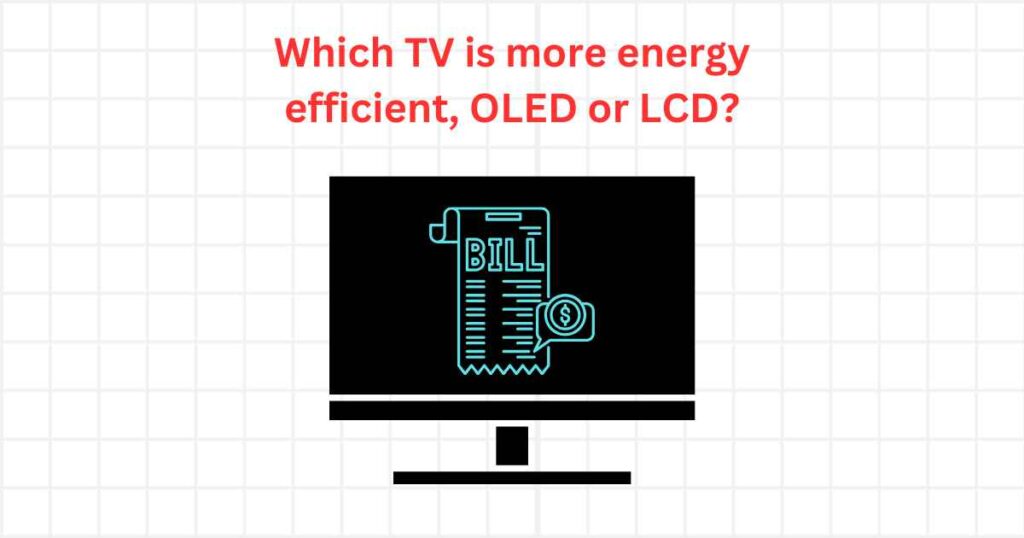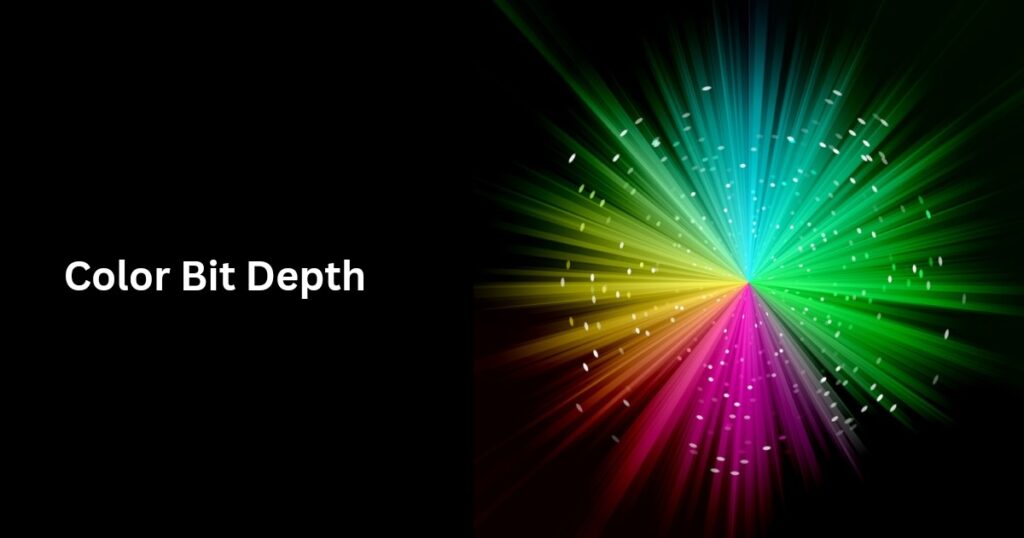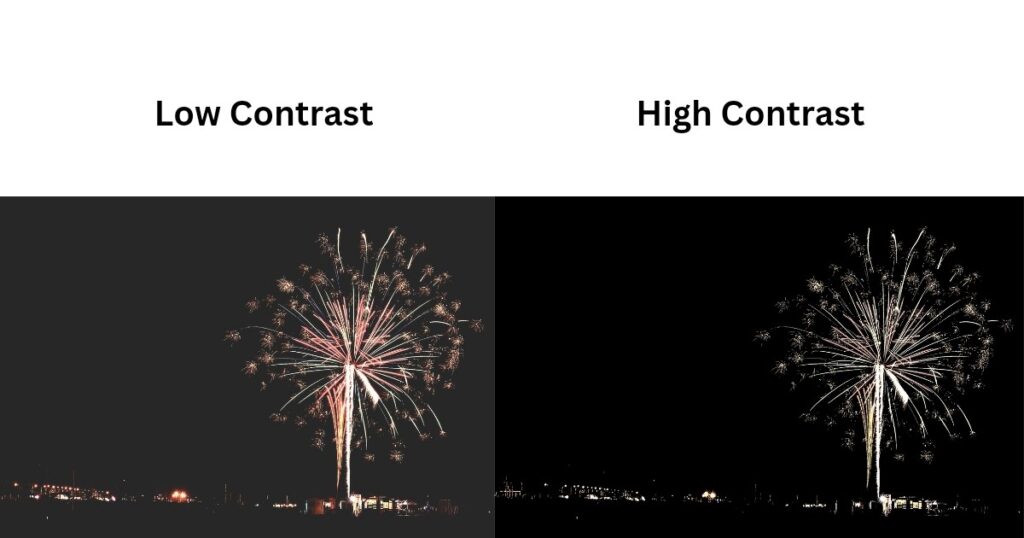Which TV is more energy efficient, OLED or LCD?

When the electricity bill arrives every month, it is likely to make you think about how much power your household appliances, like fans, air conditioners, refrigerators, and TVs are consuming.
You might also wonder which appliances, even with frequent use, could help keep the electricity bill lower over time.
Focusing on televisions, the two main types available today are OLED and LCD.
Now the question here is: which one cuts more on the electricity cost?
But with so many OLED and LCD TVs on the market, differing in size, resolution, and technology, finding a straightforward answer isn’t that simple.
OLED
OLED stands for Organic Light-Emitting Diode.
It’s a self-emissive display technology that uses organic pixels capable of generating their own light.
Since each pixel can be turned on or off independently, OLED TVs deliver perfect blacks and virtually infinite contrast.
LCD
LCD stands for Liquid Crystal Display.
An LED TV is essentially an LCD TV which makes the use of an LED backlight.
In this type of TV, a layer of liquid crystals controls how much light from an LED backlight passes to the screen.
Because the LEDs in the backlight illuminate together, these LED LCD TVs can achieve high brightness levels, making them well-suited for bright environments.
Factors affecting the energy consumption of OLED and LCD TVs
Having said that, we’ll now look into the key factors that impact their power consumption and then dive deeper into comparing the energy costs of OLED and LCD TVs.
Type of content
Now think about it—what would take the most power: lighting up a few hundred LEDs, or millions of organic LEDs?
Clearly, since an OLED TV has to light up millions of self-emissive pixels, it usually ends up consuming more energy than an LED TV.
That said, the story changes with bright HDR content.
The brightest LCD, or more precisely the brightest mini-LED TVs can actually push out more brightness than OLEDs when displaying bright HDR highlights.
They have thousands of tiny LEDs in the backlight to light up to reach several nits of brightness and that’s where their power usage shoots up higher than OLEDs.
On the flip side, consider a high-contrast scene where most parts of the picture are dark.
In such cases, OLEDs can simply turn off the unused pixels, which cuts down their energy consumption a lot.
So, when it comes to darker scenes, OLED TVs generally prove to be more energy-efficient than LCDs whose backlights remain on continuously.
Viewing environment
The environment where you watch TV also plays a big role in how much power it uses.
In a brightly lit room, the screen has to pump out more brightness to overcome glare and reflections.
In such cases, high-end mini-LED TVs can reach the highest brightness levels in SDR, making them the most power-hungry, followed by OLEDs, which also need to drive strong currents through millions of organic pixels to stay bright.
On the other hand, in a dark room, the TV doesn’t need to be as bright, so its power consumption naturally drops.
And when it comes to showing contrast-heavy content with lots of dark areas in such environments, OLEDs are the most energy-efficient since they can completely switch off pixels that aren’t being used.
TV size
Larger LED LCD TVs naturally need more LEDs in their backlight and additional internal circuitry compared to smaller models, which leads to higher power consumption.
According to RTings.com, they have provided an electricity cost calculator that estimates the power usage and yearly electricity cost of both LED and OLED TVs based on their screen sizes.
From this tool, you can see that at the smaller sizes of around 42–43 inches, an OLED TV consumes roughly $60 more per year than an LED of the same size.
But at the larger end, at the size of 75 inches, that yearly cost difference shrinks to just about $3.
Interestingly, on average, both LED and OLED TVs see an increase of around $100 in yearly electricity cost when moving from 42–43 inches up to 75 inches.
So, it’s clear that bigger TVs generally use more power. But the increase in electricity cost isn’t determined by size alone.
For example, a full-array or mini-LED TV can reach much higher brightness levels in HDR, which makes it more power-hungry compared to an edge-lit LED TV of the same size.
Resolution
An 8K TV packs four times as many pixels as a 4K TV, and a 4K TV has four times more pixels than an HD TV.
Naturally, the higher the resolution, the more pixels need to be lit up.
So in general, an 8K OLED or LCD TV consumes more power than a 4K counterpart.
However, this isn’t always the case.
For example, if you watch a bright HDR video on a 4K mini-LED TV and a dark movie on an 8K OLED TV, the results can flip.
The 8K OLED can switch off most of its pixels in dark scenes, making its power consumption equal to, or even lower than that of the 4K mini-LED, which has to keep its LEDs shining brightly to deliver the HDR highlights.
TV viewing habits
A big factor in a TV’s power consumption also comes down to your viewing habits.
By reducing the brightness on an OLED TV when it’s not needed, or lowering the brightness settings of the backlight on an LCD TV, you can cut down on energy use.
Similarly, switching off the TV completely instead of leaving it in standby mode helps save even more on your electricity bill.
Between OLED and LCD, which one is more power-efficient?
The energy use of an OLED or LCD TV depends on several factors such as the type of content you watch, the viewing environment, the screen size, resolution, and even your own viewing habits.
Because of these so many factors, there isn’t a simple, one-size-fits-all answer to which technology is more efficient.
That said, in general, bigger, brighter, and higher-resolution TVs draw more power than smaller, dimmer, lower-resolution ones.
Since OLEDs have millions of self-emissive pixels to light up, they typically consume more energy than LCDs, which rely on a limited number of LEDs in the backlight.
In bright rooms or when playing HDR content, mini-LED backlit LCDs consume the most power.
On the other hand, in dark viewing environments or with darker content, OLEDs can switch off unused pixels, making them the most power-efficient option.
Which TV will help me save more on electricity bills, OLED or LCD?
TVs have advanced a lot over the years, not just in technology, but also in terms of energy efficiency.
These days, if you compare any two TVs of the same size and resolution, the difference in yearly electricity cost usually comes down to just a few dollars.
Such amount shouldn’t really be the deciding factor when choosing a TV.
Instead, it’s better to focus on what truly matters in the long run, i.e., how much better picture quality and smart features the TV brings with it.


